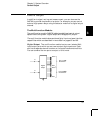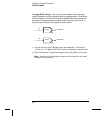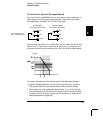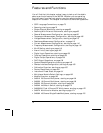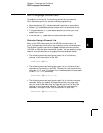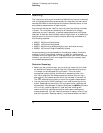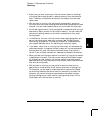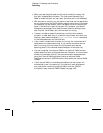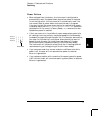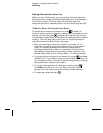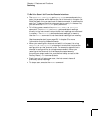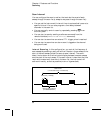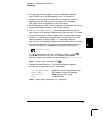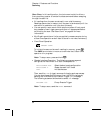
• Each time you start a new scan, the instrument clears all readings
(including alarm data) stored in reading memory from the previous
scan. Therefore, the contents of memory are always from the most
recent scan.
• While a scan is running, the instrument automatically stores the
minimum and maximum readings and calculates the average for each
channel. You can read these values at any time, even during a scan.
• Mx+B scaling and alarm limits are applied to measurements during a
scan and all data is stored in non-volatile memory. You can read the
contents of reading memory or the alarm queue at any time, even
during a scan.
• In the Monitor function, the instrument takes readings as often as it
can on a single channel, even during a scan (see “Single-Channel
Monitoring” on page 93). This feature is useful for troubleshooting
your system before a test or for watching an important signal.
• If you abort a scan that is running, the instrument will complete the
one measurement in progress (the entire scan will not be completed)
and the scan will stop. You cannot resume the scan from where it
left off. If you initiate a new scan, all readings are cleared from memory.
• When you add a multiplexer channel to a scan list, that entire module
is dedicated to the scan. The instrument issues a Card Reset to open
all channels on that module. You cannot perform low-level close or
open operations on any channels on that module (even those channels
that are not configured).
• While a scan is running, you can perform some low-level control
operations on modules that do not contain channels in the scan list.
For example, you can open or close channels or issue a Card Reset
on switching modules that do not contain channels in the scan list.
However, you cannot change any parameters that affect the scan
(channel configuration, scan interval, scaling values, alarm limits,
Card Reset, etc.) while a scan is running.
4
Chapter 4 Features and Functions
Scanning
75



